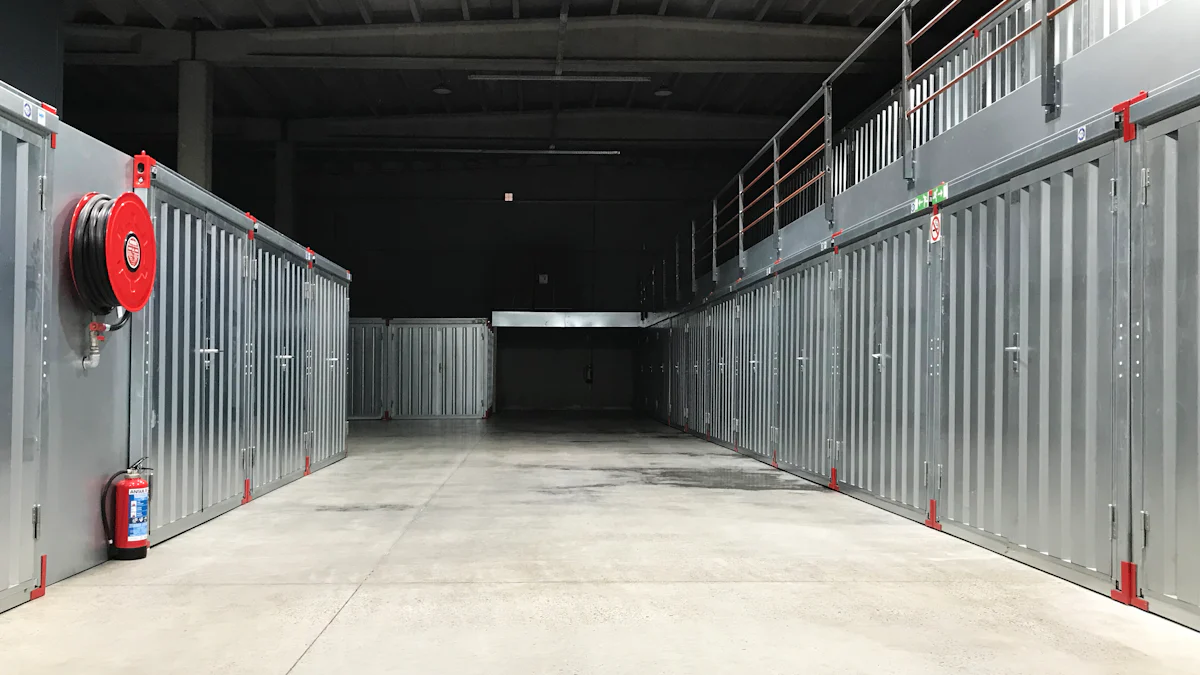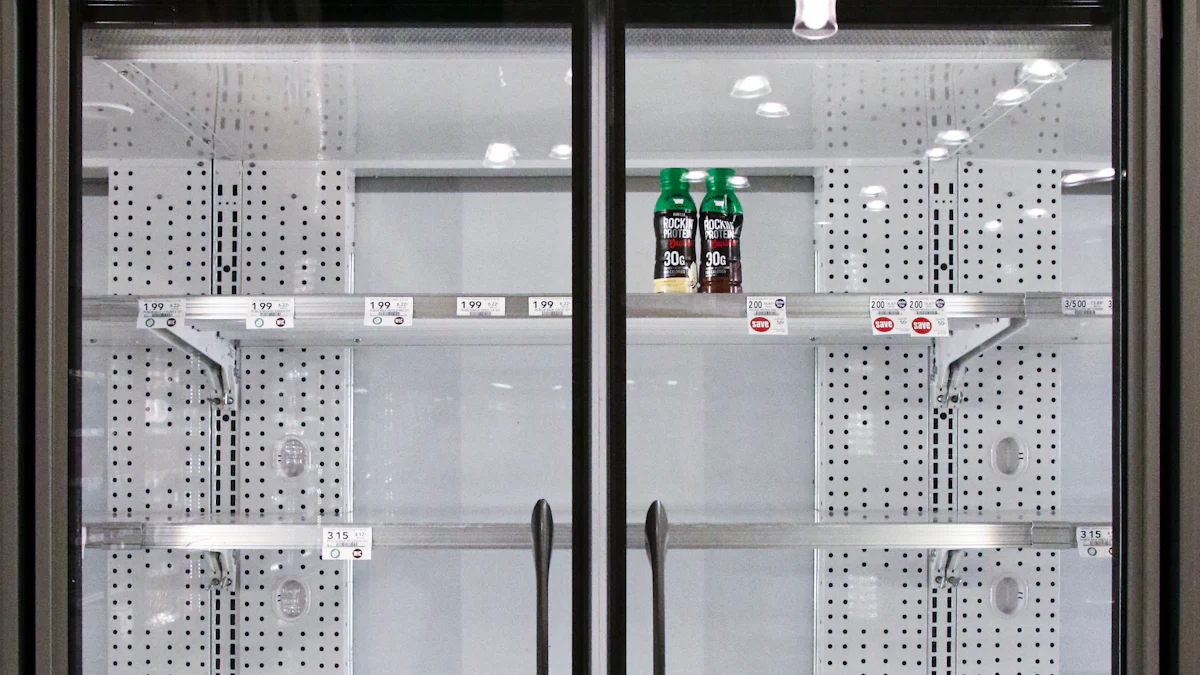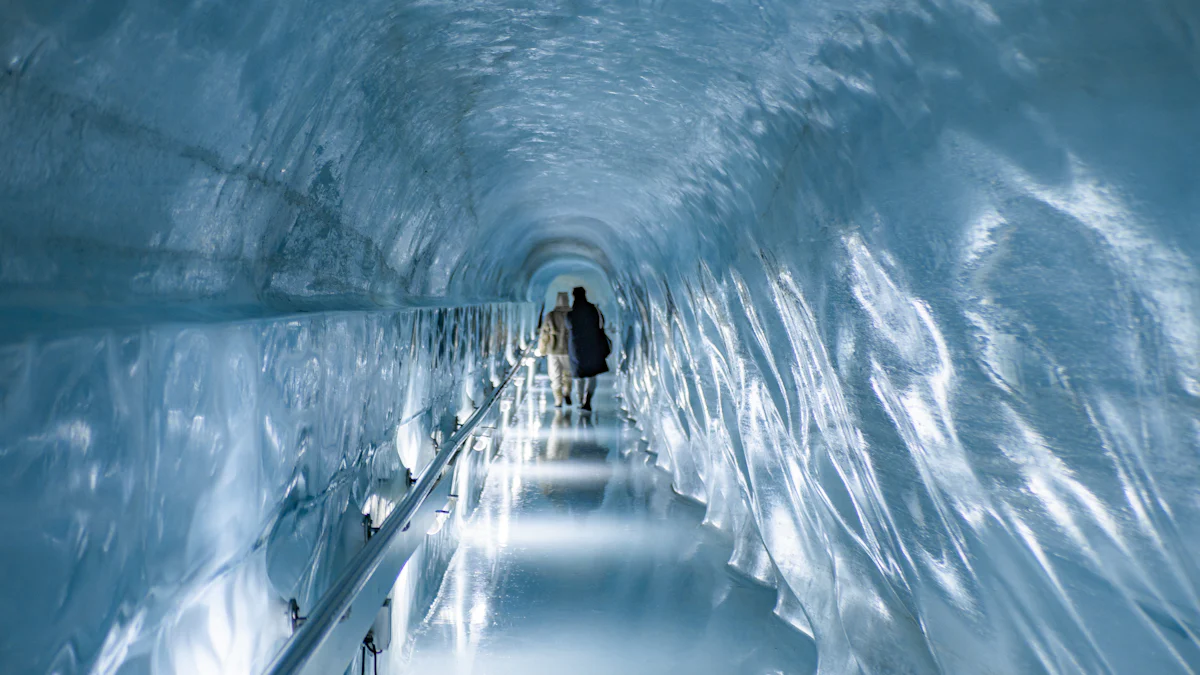What Is the Temperature of a Tunnel Freezer?

Tunnel freezers operate at extremely low temperatures, ranging from -40°F to as cold as -320°F. These freezing systems are designed to rapidly chill products, locking in their freshness and quality. By freezing items quickly, tunnel freezers prevent the formation of large ice crystals, which can damage texture and flavor. Whether you're preserving food or pharmaceuticals, this technology ensures optimal results. The precise temperature control also helps maintain the nutritional value and safety of your products, making it an essential tool for industries that demand high standards.
Understanding the Temperature Ranges of Tunnel Freezers

Tunnel freezers are designed to operate at extremely low temperatures, making them essential for industries that require rapid freezing. But what exactly are the temperature ranges, and why do they matter? Let’s break it down.
Typical temperature ranges for tunnel freezers
Tunnel freezers come in two main types: mechanical and cryogenic. Each type has its own temperature capabilities. Mechanical tunnel freezers typically maintain temperatures between -20°C and -40°C. These systems are ideal for freezing a variety of products efficiently while keeping energy consumption manageable. On the other hand, cryogenic tunnel freezers can reach much lower temperatures, sometimes as cold as -196°C. This makes them perfect for applications that demand ultra-rapid freezing, such as preserving delicate food textures or handling pharmaceutical products.
Most tunnel freezers operate below -1°F, which is significantly colder than standard cold storage rooms. This extreme cold ensures that products freeze quickly, locking in their quality and extending shelf life. For example, many food processing plants rely on tunnel freezers to rapidly cool items to -18°C, a common benchmark for frozen goods. Whether you’re freezing seafood, baked goods, or even medical supplies, these temperature ranges provide the flexibility to meet diverse needs.
Importance of temperature in rapid freezing processes
The temperature inside a tunnel freezer isn’t just a number—it’s a critical factor that directly impacts the quality of your products. Rapid freezing at ultra-low temperatures prevents the formation of large ice crystals. Why does this matter? Large ice crystals can damage the texture, flavor, and overall integrity of your products. By freezing items quickly, tunnel freezers help maintain their original structure and taste.
For businesses in the food industry, this means your frozen fruits, vegetables, or meats will look and taste fresh when thawed. In the pharmaceutical world, precise temperature control ensures the stability and effectiveness of sensitive materials like vaccines or biological samples. Additionally, maintaining the right temperature helps you comply with safety standards, reducing the risk of spoilage or contamination.
In short, the temperature range of a tunnel freezer isn’t just about freezing—it’s about preserving quality, ensuring safety, and meeting the high expectations of your customers.
Types of Tunnel Freezers and Their Temperature Capabilities
Tunnel freezers come in different types, each designed to meet specific freezing needs. Understanding these types helps you choose the right one for your operations. Let’s explore the two main categories: mechanical and cryogenic tunnel freezers.
Mechanical tunnel freezers
Mechanical tunnel freezers use refrigeration systems to maintain consistent low temperatures. These freezers typically operate between -20°C and -40°C, making them suitable for a wide range of products. You’ll find them commonly used in food processing plants for freezing items like fruits, vegetables, and baked goods.
One of the biggest advantages of mechanical systems is their energy efficiency. They provide steady cooling, ensuring uniform freezing across all products. This consistency helps maintain product quality and safety. If you’re looking for a reliable option for large-scale freezing, mechanical tunnel freezers are a great choice.
Cryogenic tunnel freezers
Cryogenic tunnel freezers take freezing to the next level. These systems use liquid nitrogen or carbon dioxide to achieve ultra-low temperatures, sometimes as cold as -196°C. This rapid cooling process is perfect for preserving delicate textures and flavors. For example, seafood and premium cuts of meat benefit greatly from cryogenic freezing.
Another key feature of cryogenic freezers is their speed. They freeze products much faster than mechanical systems, which can be a game-changer for industries that need quick turnaround times. If you’re handling sensitive materials like pharmaceuticals or high-end food products, cryogenic tunnel freezers offer unmatched performance.
Key differences between mechanical and cryogenic systems
When deciding between mechanical and cryogenic tunnel freezers, it’s important to consider their differences. Here’s a quick breakdown:
Temperature Range: Mechanical freezers operate at moderate low temperatures (-20°C to -40°C), while cryogenic systems reach ultra-low levels (-196°C).
Freezing Speed: Cryogenic freezers work faster, making them ideal for time-sensitive applications. Mechanical systems focus on steady, uniform freezing.
Applications: Mechanical freezers suit bulk freezing needs, such as frozen vegetables or baked goods. Cryogenic freezers excel in preserving texture and quality for premium products like seafood or pharmaceuticals.
Choosing the right system depends on your specific needs. If you prioritize energy efficiency and consistent freezing, go with a mechanical freezer. If speed and ultra-low temperatures are critical, a cryogenic system is the way to go.
Factors That Influence Tunnel Freezer Temperatures
Tunnel freezer temperatures don’t just happen by chance. Several factors work together to determine how cold these systems can get and how effectively they operate. Let’s dive into the key elements that influence these temperatures.
Product type and freezing requirements
The type of product you’re freezing plays a huge role in determining the temperature settings of your tunnel freezer. Different items have unique freezing needs. For example:
Food products: Fruits, vegetables, and meats require specific temperatures to preserve their texture and flavor. Many food items need to be frozen quickly to avoid large ice crystal formation, which can damage quality. For instance, seafood often benefits from ultra-low temperatures to maintain its delicate structure.
Pharmaceuticals: Vaccines, biological samples, and other sensitive materials demand precise temperature control. Even slight variations can compromise their effectiveness.
Industrial goods: Some specialized products, like chemicals or electronics, may also require freezing for storage or processing.
Understanding your product’s freezing requirements ensures you set the right temperature. This not only preserves quality but also optimizes energy use.
Freezer design and operational settings
The design of your tunnel freezer significantly impacts its temperature capabilities. Mechanical freezers, for instance, typically operate between -20°C and -40°C. Cryogenic freezers, on the other hand, can reach as low as -196°C. The choice between these systems depends on your operational needs.
Operational settings also matter. Adjusting airflow, conveyor speed, and cooling cycles can fine-tune the freezing process. Faster conveyor speeds might require lower temperatures to ensure products freeze completely before exiting the system. Similarly, consistent airflow helps maintain uniform cooling across all items.
Pro Tip: Regularly review your freezer’s settings to match your production goals. Small adjustments can make a big difference in performance.
Maintenance and temperature control systems
Maintenance is the backbone of any efficient tunnel freezer. Without proper upkeep, even the best-designed systems can struggle to maintain optimal temperatures. Here’s why:
Cleanliness: Ice buildup or debris can block airflow, reducing cooling efficiency. Regular cleaning keeps the system running smoothly.
Component checks: Fans, compressors, and sensors need routine inspections. Faulty parts can lead to temperature fluctuations, risking product quality.
Calibration: Temperature control systems must be accurate. Periodic calibration ensures the freezer operates within the desired range.
Investing in maintenance not only extends the life of your equipment but also ensures consistent performance. A well-maintained tunnel freezer delivers reliable results, keeping your products safe and high-quality.
By understanding these factors, you can take control of your tunnel freezer’s performance. Whether it’s tailoring the temperature to your product, optimizing operational settings, or staying on top of maintenance, every detail counts. When you get it right, you’ll see the benefits in both product quality and operational efficiency.
Applications of Tunnel Freezers Across Industries

Tunnel freezers play a vital role in various industries, offering efficient and reliable freezing solutions. Their ability to rapidly freeze products while preserving quality makes them indispensable across multiple sectors. Let’s explore how different industries benefit from this advanced technology.
Food industry applications
In the food industry, tunnel freezers are a game-changer. They ensure rapid freezing, which helps maintain the freshness, texture, and flavor of food products. Whether you’re dealing with raw produce, seafood, or baked goods, these freezers deliver consistent results. For example, freezing fruits and vegetables quickly prevents nutrient loss, keeping them as fresh as possible for consumers.
Bakeries also rely heavily on tunnel freezers. Fast-freezing baked goods locks in moisture and texture, ensuring they taste just as good when thawed. Ready meals benefit too. These meals require quick freezing to preserve their nutritional content and flavor, making them convenient and high-quality options for busy consumers. By using tunnel freezers, food producers can meet high standards while extending shelf life.
Fun Fact: Tunnel freezers not only save space but also help inhibit bacterial growth by rapidly lowering temperatures. This ensures food safety and quality at every step of the cold chain.
Pharmaceutical and medical uses
The pharmaceutical and medical industries demand precision, and tunnel freezers deliver. These systems are essential for freezing sensitive materials like vaccines, biological samples, and medical compounds. Rapid freezing at ultra-low temperatures ensures the stability and effectiveness of these products.
For instance, vaccines often require storage at specific temperatures to remain viable. Tunnel freezers provide the controlled environment needed to meet these requirements. Similarly, biological samples used in research or diagnostics benefit from quick freezing, which preserves their integrity for future use. If you work in this field, you know how critical it is to maintain quality and reliability, and tunnel freezers make that possible.
Industrial and specialized applications
Beyond food and medicine, tunnel freezers serve unique purposes in industrial and specialized applications. Some industries use these systems to freeze chemicals, electronics, or other materials that require precise temperature control. For example, certain manufacturing processes involve freezing components to improve their durability or performance.
Specialized applications also include freezing items for storage or transportation. Whether it’s preserving delicate materials or preparing products for extreme conditions, tunnel freezers offer unmatched versatility. Their ability to adapt to different needs makes them a valuable asset in various industrial settings.
Tunnel freezers prove their worth across industries by combining efficiency, precision, and reliability. Whether you’re in food production, pharmaceuticals, or industrial manufacturing, these systems help you achieve your goals while maintaining the highest standards of quality.
Benefits of Maintaining Optimal Tunnel Freezer Temperatures
Maintaining the right temperature in a tunnel freezer is more than just a technical requirement. It’s a key factor that directly impacts the quality of your products, the efficiency of your operations, and the longevity of your goods. Let’s explore how keeping optimal temperatures benefits you.
Ensuring product quality and safety
When you maintain the correct temperature in your tunnel freezer, you protect the quality and safety of your products. Rapid freezing at ultra-low temperatures prevents the formation of large ice crystals. These crystals can damage the texture and flavor of food or compromise the integrity of sensitive materials like pharmaceuticals. By freezing quickly, you lock in freshness and preserve the original structure of your items.
Did you know? Tunnel freezers inhibit bacterial growth and enzyme activity by rapidly lowering temperatures. This ensures that your products remain safe for consumption or use.
Proper airflow, belt speed, and humidity control also play a role in maintaining food quality. These factors work together to create a controlled environment that keeps your products in peak condition. Whether you’re freezing seafood, baked goods, or vaccines, maintaining optimal temperatures ensures that your items meet the highest standards.
Enhancing operational efficiency
Keeping your tunnel freezer at the right temperature doesn’t just benefit your products—it also boosts your operational efficiency. When your freezer operates within its ideal range, it uses energy more effectively. This reduces waste and lowers your operating costs.
Efficient freezing also speeds up production. Products freeze faster and more uniformly, which minimizes bottlenecks in your workflow. You can process more items in less time without compromising quality. Adjusting settings like conveyor speed and cooling cycles helps you fine-tune the freezing process to match your production goals.
Pro Tip: Regular maintenance ensures your freezer runs smoothly. Clean components and calibrated sensors keep temperatures consistent, improving both efficiency and reliability.
Extending product shelf life
Optimal temperatures in a tunnel freezer play a crucial role in extending the shelf life of your products. Freezing items quickly and at the right temperature slows down spoilage and preserves their nutritional value. For food products, this means longer-lasting freshness and better taste. For pharmaceuticals, it ensures stability and effectiveness over time.
By reducing the risk of contamination or degradation, you can store products for longer periods without sacrificing quality. This not only benefits your business but also builds trust with your customers. They’ll appreciate receiving high-quality goods that meet their expectations.
Maintaining the right temperature in your tunnel freezer is essential for achieving the best results. You’ll ensure product quality, improve operational efficiency, and extend shelf life—all while meeting the demands of your industry. When you prioritize temperature control, you set yourself up for success.
Choosing the Right Tunnel Freezer for Your Needs
Selecting the right tunnel freezer can feel overwhelming, but breaking it down into key considerations makes the process much simpler. By focusing on your specific needs, you can ensure the freezer you choose aligns perfectly with your goals.
Assessing temperature and product requirements
Start by evaluating the freezing needs of your products. Different items require different temperature ranges to maintain their quality. For example, fruits and vegetables often need moderate freezing temperatures to preserve their texture and nutrients. On the other hand, seafood or premium meats benefit from ultra-low temperatures to lock in their delicate structure and flavor.
Ask yourself these questions: What type of product are you freezing? How quickly does it need to freeze? What is the desired final temperature? These answers will guide you toward the right system. For instance, if you’re freezing baked goods, a mechanical tunnel freezer operating between -20°C and -40°C might be ideal. However, if you’re handling pharmaceuticals or high-end food products, a cryogenic freezer capable of reaching -196°C could be the better choice.
Pro Tip: Always consider the volume of products you’ll freeze daily. This helps you choose a freezer with the right capacity and ensures consistent performance.
Comparing mechanical and cryogenic options
Understanding the differences between mechanical and cryogenic tunnel freezers is crucial. Each type offers unique advantages, so your choice depends on your priorities.
Mechanical Tunnel Freezers: These systems use traditional refrigeration methods to maintain steady temperatures. They’re energy-efficient and provide uniform freezing, making them great for bulk products like vegetables or ready-to-eat meals. If you’re looking for reliability and cost-effectiveness, mechanical freezers are a solid option.
Cryogenic Tunnel Freezers: These freezers use liquid nitrogen or carbon dioxide to achieve ultra-low temperatures. They freeze products rapidly, which is perfect for preserving delicate textures and flavors. Cryogenic systems are ideal for industries that prioritize speed and precision, such as seafood processing or pharmaceutical manufacturing.
When comparing these options, think about your operational goals. Do you need rapid freezing to meet tight deadlines? Or do you prioritize energy efficiency and steady performance? Matching the freezer type to your needs ensures you get the best results.
Quick Tip: Cryogenic freezers often have a smaller footprint, making them a good choice if space is limited in your facility.
Consulting with experts for customized solutions
Sometimes, the best way to find the right tunnel freezer is by consulting with industry experts. Professionals can assess your specific requirements and recommend tailored solutions. They’ll consider factors like your product type, desired temperature range, and production volume to help you make an informed decision.
Experts can also guide you on additional features, such as airflow optimization, belt speed adjustments, or humidity control. These elements play a significant role in maintaining product quality and ensuring efficient operations. By working with specialists, you can customize your freezer to meet your exact needs.
Why It Matters: A customized solution not only improves freezing performance but also enhances energy efficiency and reduces long-term costs.
Choosing the right tunnel freezer doesn’t have to be complicated. By assessing your product requirements, comparing mechanical and cryogenic options, and consulting with experts, you can make a confident decision. The right freezer will not only meet your current needs but also adapt to future demands, ensuring your business stays ahead.
Tunnel freezers deliver a wide range of temperatures, making them versatile for various industries. Their performance depends on factors like the type of product, freezer design, and operational settings. By understanding these elements, you can optimize freezing processes to preserve freshness and ensure safety.
Pro Tip: Regular maintenance and proper loading techniques keep your freezer running efficiently.
Choosing the right tunnel freezer requires assessing your needs and consulting experts. This approach ensures you select a system that meets your goals and supports long-term success.
See Also
Exploring The Temperature Range Of Tunnel Freezers
Innovative Tunnel Freezer Solutions For Freezing Challenges
Key Elements Influencing The Cost Of Tunnel Freezers

